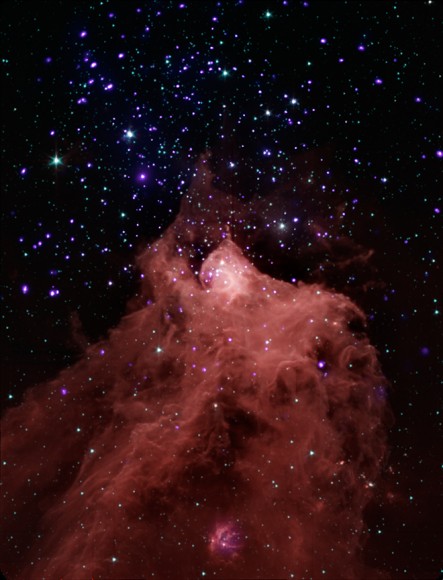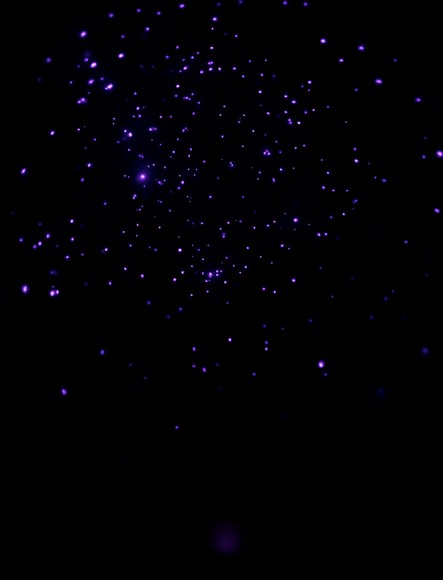The Cepheus B region, lying in the Cepheus constellation in the Cave Nebula (aka Caldwell 9) near the M52 galaxy, has apparently begun a star-formation process owing to - much to the schock of many astronomers - a radiation nudge (if I may call it so) by a massive star just outside the region's molecular cloud.
One option was that the star-formation area cloud cools, gravity gets the upper hand, and the cloud falls in on itself. The other possibility was that a trigger from some external source - like radiation from a massive star or a shock from a supernova - initiates the collapse. Some previous studies have noted a combination of triggering mechanisms in effect.

Konstantin Getman of Penn State University, University Park, Pa. who is, presently, the lead author of the study regarding Cepheus B, said 'Astronomers have generally believed that it is somewhat rare for stars and planets to be triggered into formation by radiation from massive stars. Our new result shows this belief is likely to be wrong.'
For such externally-triggered star formations, a somewhat general scenario must have older stars on the boundary and new and yet-to-form stars, with the most protoplanetary disks, in the inner region. And this is exactly what the Chandra-Spitzer analysis has confirmed; and, thus, supported the trigger-formation.
While slightly farther away than the famous Orion star-forming region, Cepheus B is at a better orientation for astronomers to observe the triggering process. The Chandra observations allowed the astronomers to pick out young stars within and around Cepheus B. Young stars have turbulent interiors that generate highly active magnetic fields, which, in turn, produce strong and identifiable X-ray signatures.
The Spitzer data revealed whether the young stars have a disk of material (known as "protoplanetary" disks) around them. Since they only exist in very young systems where planets are still forming, the presence of protoplanetary disks -- or lack thereof -- is an indication of the age of a star system.
According to theoretical models, radiation from the trigger-star, in case of Cepheus B, would drive a compression wave into the cloud-triggering star formation in the interior, while evaporating the cloud's outer layers.
'We essentially see a wave of star and planet formation that is rippling through this cloud,' said co-author Eric Feigelson (also of Penn State). 'It's clear that we can learn a lot about stellar nurseries by combining data from these two Great Observatories (Chandra and Spitzer).'
How helpful will this new model prove to be?
To quote Stephen Hawking, 'Only time (whatever that is) will tell'
.





Comments